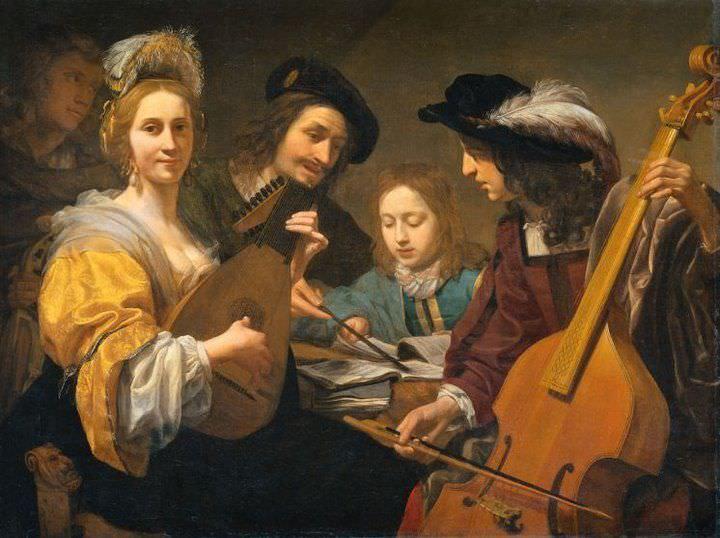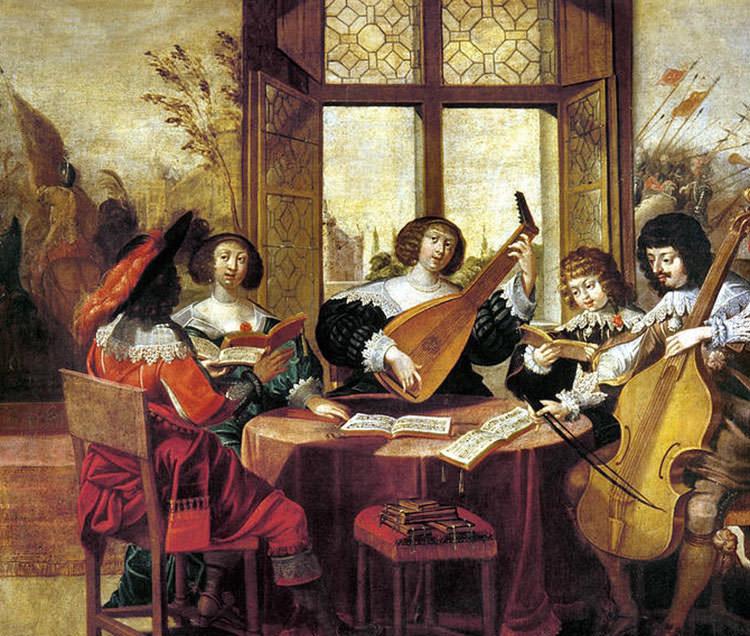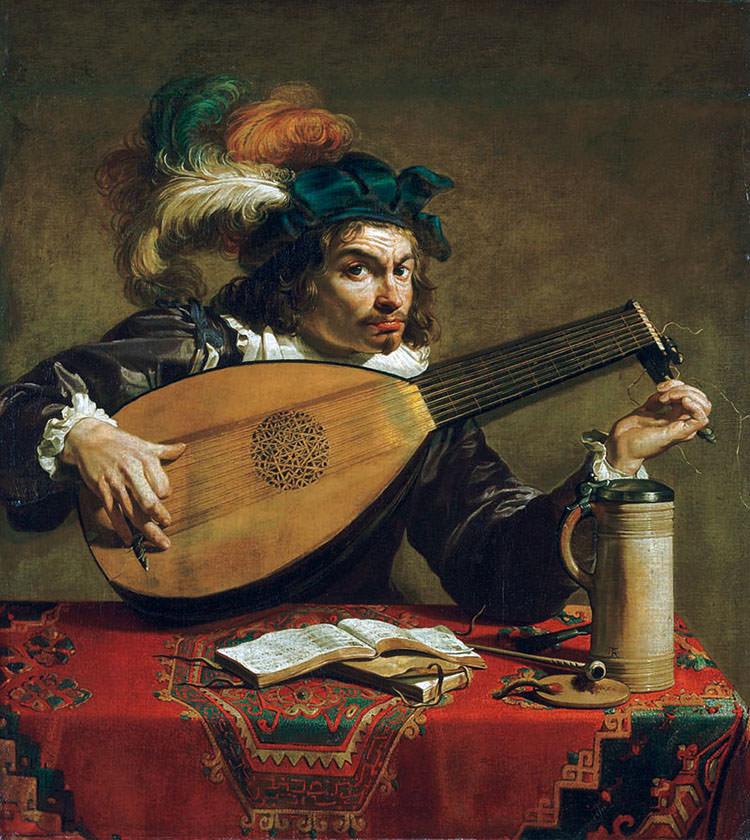Guide to renaissance music
The Renaissance was a wonderful, deeply fascinating period in our history that gifted us with so much art we still cherish today. But how did it all happen, and who were the key Renaissance players?
While you might enjoy a nice, quiet evening listening to Renaissance music, how much do you actually know about this era? Below, we try to provide our readers with a little bit of background to round out their Renaissance music listening. We also delve into just how music composition and styles changed during the Renaissance, and how that impacted the history of music.
First off, when was the Renaissance?
The Renaissance began in the 15th century and is largely attributed to the invention of the printing press. The exact moment of the Renaissance varies from country to country, with the most prominent and earliest country to emerge into this new era being, of course, Italy. Here, great minds like Francesco Petrarch, and Leonardo DaVinci began focusing on art, in all its forms, as well as other humanistic pursuits.
Taking their cue from Italy, other countries like France and England had generally adopted humanist goals by the early 1500s. While each country had its own schedule, the Renaissance is generally believed to have taken place between the 1400s and the 1600s.
Outside of music, the Renaissance was defined by some of the greatest artists and thinkers of all time, including Erasmus, Giotto, Descartes, Botticelli, and Michelangelo, to name a few.

Music in the Renaissance
One of the definitions of the humanist approach was a profound interest in all things concerning the soul. The Renaissance also saw a resurging interest in Ancient Greece and Rome, and their many nobler endeavors (which had been forgotten during the Dark Ages).
It’s no wonder, then, that artists of this newly enlightened period started studying the intricate connection between music and the soul. It became evident pretty soon that music could have the same emotional impact that poetry did, as an art form. It was during the Renaissance that artists first began associating music with poetry, and subsequently story.
Interesting Fact: Not only do we owe the Renaissance to the invention of the printing press; but it’s also how so much Renaissance music managed to survive the centuries.
How did music change in the Renaissance?
The Renaissance also saw an important shift in the relationship society had with religion. Up until this point, pretty much all music was written for the Catholic Church, to be used during Mass.
However, as the Renaissance began to embrace art for its own sake, making music suddenly became about more than just the Church. Another important event that changed the face of music forever was the Reformation, which saw the Church split into two factions: Protestants and the Roman Catholic Church.
These changes in attitude meant music became a secular endeavor, not necessarily tied to Catholic Mass.

Renaissance Music – What are its characteristics?
We’ve spoken quite a bit about Renaissance music, but what exactly defined it as such? And how was it different from the music of the Middle Ages?
1. It brought new instruments.
The Renaissance saw the invention of numerous new instruments, as well as variations and improvements to existing ones. Renaissance music used lutes, lyres, the Renaissance harp, the Lira da Braccio and the fiddle (predecessors to the violin), hornpipes, bagpipes, shawms (a predecessor of the oboe), trumpets, cornetts, and tambourines, to name but a few.
Suddenly, musicians and composers had a lot more to choose from. Moreover, with all these newly-invented instruments, owning one became more commonplace. Households would commonly feature some musical instrument for personal entertainment.
2. It created polyphony.
It might seem hard to imagine, but up until the Renaissance, music had a monophonic aspect to it (meaning it only featured one melodic line). Because of the Church’s strong sway over music, composers had to respect such guidelines.
But during the Renaissance, noblemen and royalty began sponsoring artists, thus allowing them more creative freedom. Seeing that music often became more harmonical when one added multiple melodic lines, composers developed what would eventually be known as the Motet.
3. Renaissance music was about blending.
During Medieval times, music was all about contrast, often based around a shell harmony (a sharp contrast between the first and fifth notes). During the Renaissance, however, as composers explored multiple melodic lines and new horizons, they stumbled upon the precious third note.
By blending from the first to the third, and finally to the fifth note, Renaissance composers created a true harmony. They discovered that blending could often serve to amplify the base melody, rather than dull it.
4. It was tonal, rather than modal.
Medieval music was defined as modal, meaning it followed different modalities (and not a minor or Major scale). The Renaissance changed that. As composers turned secular in their creation, music became about tonality, exploring the more uniform harmony of a pitch class.
This can be seen in all the emergent music styles (German lied, madrigal, chanson) of the era, but also in later musical periods, like Romantic or Baroque.
5. Renaissance music has more emotional depth.
That’s largely owing to the inclusion of the third note which had, until this point, been considered unharmonious and unpleasant. Through this, composers were now able to capitalize on a brand new level of emotional depth, since the third note is what lends a scale its ultimate value.
Through the development of tonal music and the transition to polyphony, Renaissance music became more emotionally charged. This, also, was the stepping stone for later eras in the history of music.

Who defined Renaissance music?
Now that we’ve seen some of the major ways in which music changed during the Renaissance period, it’s time to turn our attention to names. Who were some of the composers that defined the Renaissance period?
Early Period
● Guillaume du Fay was a French composer, known for his motet, Nuper Rosarum Flores. He is also credited as one of the early adopters of the cantilena style (one predominant vocal line with other, supporting lines).
● Johannes Ockeghem was a Franco-Flemish composer. Regarded by many as ‘the greatest composer of the late 15th century’, Ockeghem is known as one of the founding fathers of the Franco-Flemish School.
Middle Period
● Josquin des Prez was a Franco-Flemish composer known for his brilliant use of polyphony in his works. By having the different voices imitate one another in his compositions, des Prez achieved a heightened, and striking effect.
Late Period (or Counter-Reformation)
● Carlo Gesualdo was a nobleman and composer of the late 16th century, known for his use of dissonance in compositions, but also for his profoundly troubled mind.
● Giovanni Pierluigi da Palestrina was an Italian composer, known chiefly for his masses and motets. A proponent and key figure of the Roman School, da Palestrina was regarded as the greatest composer of his time.
● Claudio Monteverdi, finally, was known both for his secular work, but also for his sacred compositions. Monteverdi is regarded as one of the pioneers of the development of opera music (which was first defined as we know it now during the last few years of his life).
There are many other names that defined Renaissance music, such as Orlando de Lassus, Thomas Tallis, and William Byrd.
Now that you’ve got a deeper understanding of what Renaissance music is, it’s time to listen and see the differences for yourself. Head on over to one of Radio Art’s 34 classical music channels, and discover the masterminds that would define and influence the history of music.
Our website respects the intellectual property rights of creators, as well as the music rights of authors and composers.
The musical works are provided solely for the private use of each visitor/user
and any further exploitation of them in any way is prohibited without prior permission from AUTODIA and EDEM Rights.
Radio Art is fully approved by the Greek Collective Rights Organizations | AUTODIA | EDEM Rights
Copyright © RABS - Radio Art Broadcasting services Ltd. All rights reserved.
The Art of Relaxing & Meditation Music
Privacy Policy & TOS








